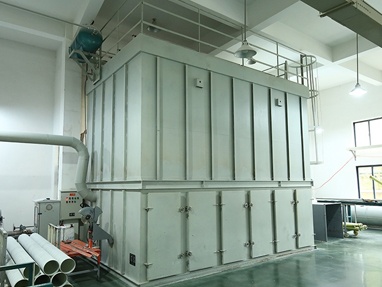How FRP tubes are revolutionizing the aerospace industry
Introduction
The aerospace industry is one of the most technologically advanced industries in the world, constantly pushing the boundaries of engineering and innovation. As aircraft become more complex and efficient, the need for lightweight, strong, and corrosion-resistant materials becomes increasingly important. Fiber-reinforced polymer (FRP) tubes have emerged as a promising solution to meet these requirements.
FRP tubes are composite materials that consist of a polymer matrix reinforced with fibers such as glass, carbon, or aramid. Compared to traditional metal tubing, FRP tubes offer several advantages including increased strength, durability, and resistance to corrosion. In this article, we will explore the benefits and challenges of implementing FRP tubes in the aerospace industry.
The Benefits of FRP Tubes in Aerospace
Lightweight and Strong Material
One of the primary benefits of FRP tubes is their high strength-to-weight ratio. Compared to metal tubing, FRP tubes can be up to 70% lighter while offering comparable or superior strength. This translates into significant weight savings for aircraft, resulting in improved fuel efficiency and cost savings.
Corrosion Resistance
FRP tubes are highly resistant to corrosion, making them an ideal material for use in harsh environments. Metal tubing is susceptible to corrosion from exposure to moisture, saltwater, and chemicals, which can compromise the structural integrity of aircraft components. FRP tubes, on the other hand, are impervious to corrosion, ensuring long-term durability and reliability.
Increased Fuel Efficiency
Reducing the weight of aircraft is a critical factor in improving fuel efficiency. By replacing metal tubing with FRP tubes, airlines can significantly reduce the weight of their aircraft, resulting in lower fuel consumption and emissions. This is particularly important given the increasing focus on sustainability and environmental responsibility in the aviation industry.
Improved Safety
FRP tubes offer superior impact resistance compared to metal tubing, which can help protect crucial aircraft components in the event of a collision. Additionally, FRP tubes can be designed to have excellent fire-resistant properties, making them ideal for use in critical aircraft systems.
Applications of FRP Tubes in Aerospace
Structural Components in Aircraft
FRP tubes are increasingly being used as structural components in aircraft such as wing spars, fuselage frames, and floor beams. These components must withstand significant loads and stresses, making the high strength and stiffness properties of FRP tubes particularly appealing.
Propulsion Systems
FRP tubes are also used in propulsion systems such as engine nacelles and thrust reversers. These components must be lightweight and durable while withstanding high temperatures and loads. FRP tubes made from advanced materials such as carbon fiber offer excellent heat resistance and high strength, making them an ideal choice for these applications.

Interior Components
FRP tubes are also used in interior components of aircraft such as overhead bins and lavatories. The lightweight properties of FRP tubes make them especially attractive for these applications, where weight savings can result in increased passenger capacity and improved fuel efficiency.
Satellite Structures
FRP tubes are also used in satellite structures, which must be lightweight and durable enough to withstand the harsh environment of space. FRP tubes made from advanced materials such as carbon fiber offer excellent thermal stability and radiation resistance, making them an ideal choice for these applications.
Challenges in Implementing FRP Tubes in Aerospace
Lack of Standardization
One of the challenges in implementing FRP tubes in aerospace is the lack of standardization in manufacturing processes and testing protocols. This can lead to inconsistent quality and performance across different suppliers, making it difficult to ensure reliable and consistent results.
Limited Availability of Manufacturing Facilities
Another challenge is the limited availability of manufacturing facilities capable of producing large-scale FRP tubes. This can result in higher costs and longer lead times for production, making it difficult for smaller aerospace companies to adopt FRP tubes at scale.

High Cost of Production
The cost of producing FRP tubes can be higher than traditional metal tubing, particularly for advanced materials such as carbon fiber. This can be a barrier to adoption, especially for smaller aerospace companies with limited budgets.
Conclusion
FRP tubes offer significant benefits over traditional metal tubing in the aerospace industry, including increased strength, durability, and corrosion resistance. They are increasingly being adopted for use in structural components, propulsion systems, interior components, and satellite structures. However, challenges such as lack of standardization, limited availability of manufacturing facilities, and high production costs remain. With continued investment in research and development, however, the potential for further advancements in FRP tube technology is promising. As the aviation industry continues to prioritize sustainability, the adoption of lightweight and efficient materials such as FRP tubes will likely play an increasingly important role in the years to come.

